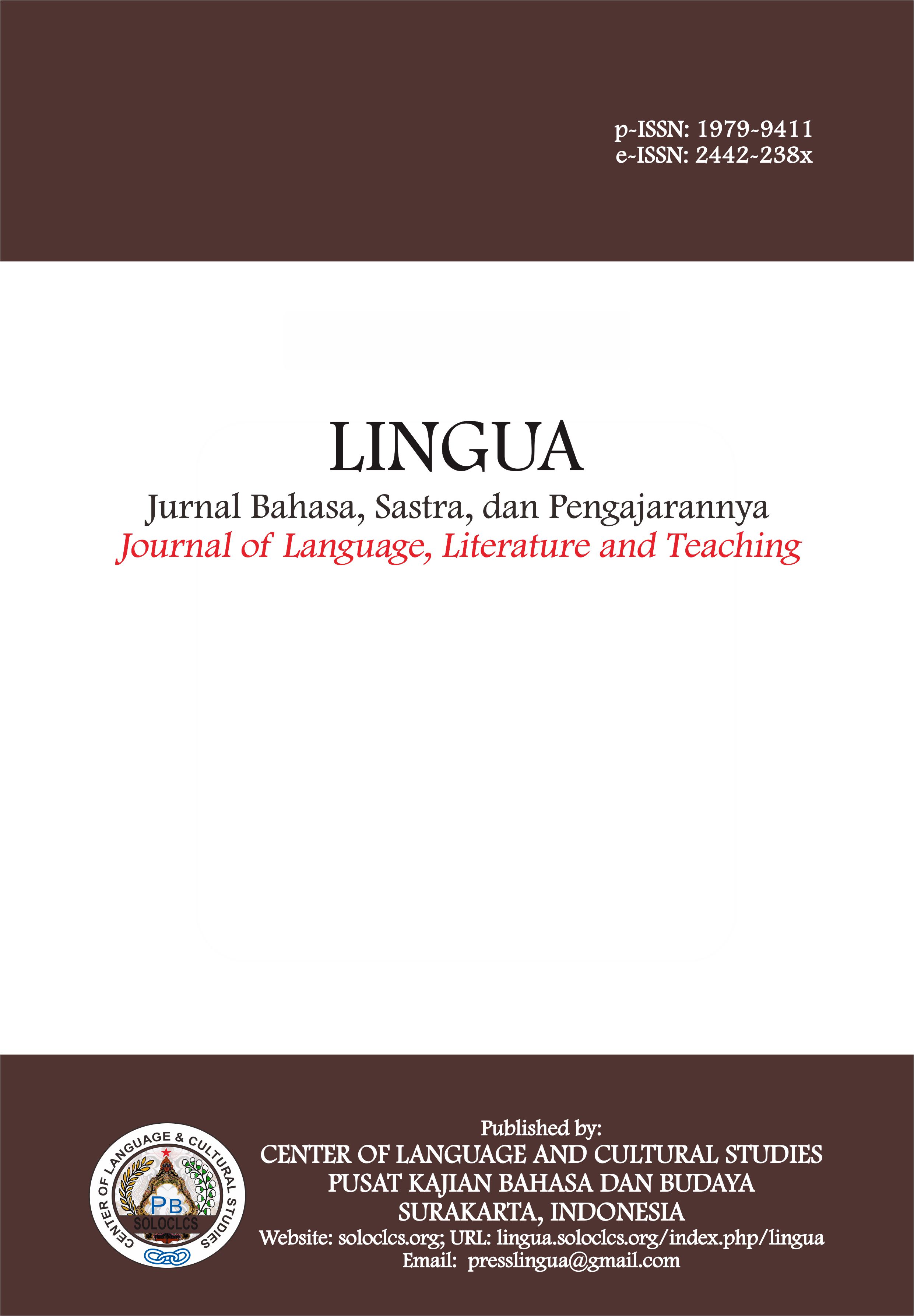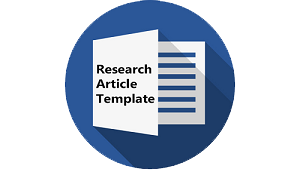Gender Representation in @amer_al_jazie Caricatures: A Critical Discourse Analysis of Women's Social Roles
DOI:
https://doi.org/10.30957/lingua.v22i1.1068Keywords:
Caricature, Gender Representation, Sarah Mills' CDAAbstract
The focus of this research is to analyze the representation of women's social roles in Amer Al-Jazie's caricatures on the Instagram account @amer_al_jazie using Sarah Mills' Critical Discourse Analysis (CDA) approach. Using a qualitative descriptive method, this study highlights four caricatures that display gender construction in Iraqi society. The results show that Amer Al-Jazie's caricatures represent the social role of women with a critical approach to the social construction of gender in Iraq. On the one hand, it criticizes patriarchy and traditional gender norms that oppress women, but on the other hand, it maintains certain gender stereotypes, which place men as the dominant party. Women are represented in various positions, both as subjects with agency and as objects controlled by patriarchal social structures. In Aljazie's caricatures, women are often positioned as individuals who are under social pressure, controlled and judged, whether in social media, state policies, households, or community norms, while men have more agency in determining their own roles and the roles of women.
Downloads
References
Agung, G. B., & Suroso. (2023). Women in Online Media News: Critical Discourse Analysis of the Sara Mills Model. Formosa Journal of Sustainable Research, 2(12), 2865–2878. https://doi.org/10.55927/fjsr.v2i12.7239 DOI: https://doi.org/10.55927/fjsr.v2i12.7239
Al-Tsania, N. A. (n.d.). Islam Dan Feminisme Di Timur Tengah. http://catatanmahasiswiuninus.blogspot.com/2018/04/gerakan-perempuan-timur-tengah.html
Alamsyah, F. F. (2020). Representasi, Ideologi dan Rekonstruksi Media. Al-I’lam: Jurnal Komunikasi Dan Penyiaran Islam, 3(2), 92–99. http://journal.ummat.ac.id/index.php/jail/article/view/2540
Alshurfa, N. S., Alsubhi, A. T., Elyas, T., & Alrawi, M. M. (2022). Socio- Feminism in Serajalghamdi ’ s Saudi Caricatures : A Discursive -Semiotic Analysis on Gender Differences. International Journal of Gender and Women’s Studies, 10(1), 28–40. https://doi.org/10.15640/ijgws.v10n1p4
Andalas, E. F., & Prihatini, A. (2018). Representasi Perempuan dalam Tulisan dan Gambar Bak Belakang Truk: Analisis Wacana Kritis Multimodal Terhadap Bahasa Seksis. Jurnal Satwika, 2(1), 1. https://doi.org/10.22219/satwika.vol2.no1.1-19 DOI: https://doi.org/10.22219/js.v2i1.7018
Febrianti, E. D., & Abrian, R. (2024). Representasi perempuan sebagai korban kdrt dalam berita suami tusuk istri di detik.com: analisis sara mills. Adibasa : Jurnal Bahasa Dan Sastra Indonesia, 01(1).
Hartutik, & Suminto A Sayuti. (2023). Sexual Harassment in News Gender Violence in Tempo.co Media and Newsroom Narratives (Sara Mills Critical Discourse Analysis). Britain International of Linguistics Arts and Education (BIoLAE) Journal, 5(2), 167–171. https://doi.org/10.33258/biolae.v5i2.910 DOI: https://doi.org/10.33258/biolae.v5i2.910
Herianto, E. A. (2023). Seksisme dan Misogini dalam Rubrik “Oi Mak Jang!” Harian Media 24 Jam. Multiverse: Open Multidisciplinary Journal, 2(2), 173–193. https://doi.org/10.57251/multiverse.v2i2.1061 DOI: https://doi.org/10.57251/multiverse.v2i2.1061
Kuo, R. (2019). Animating Feminist Anger: Economies of Race and Gender in Reaction GIFs. https://doi.org/10.1007/978-3-319-96226-9 DOI: https://doi.org/10.1007/978-3-319-96226-9_9
Miles, M. B., Huberman, A. M., & Saldana, J. (2014). Qualitative Data Analysis. Sage.
Mills, S. (1992). Knowing Your Place: A Marxist Feminst Stylistic Analysis. Dalam Michael Toolan (ed.) Language, Text, and Copntext: Essays in Stylistics. Routladge.
Moleong, L. J. (2014). Metodologi Penelitian Kualitatif Edisi Refisi (I. Taufik (ed.)). PT Remaja Rosdakarya.
Ndalianis, A. (2020). Female fans, female creators, and female superheroes. The Routledge Companion to Gender and Sexuality in Comic Book Studies, 310–328. https://doi.org/10.4324/9780429264276-27 DOI: https://doi.org/10.4324/9780429264276-27
Prakoso, T. (2021). Marni’s Living Options in Kubah Novels Works by Ahmad Tohari: Sara Mills Critical Discourse Analysis. Proceedings of the 6th International Conference on Science, Education and Technology (ISET 2020), 574, 695–699. https://doi.org/10.2991/assehr.k.211125.131 DOI: https://doi.org/10.2991/assehr.k.211125.131
Purwanto, A., & Dewanti, R. (2024). Perempuan dalam Teks Berita Women Beyond Borders : Analisis Wacana Kritis Sara Mills dan Theo van Leeuwen Analysis of Sara Mills and Theo van Leeuwen. Kajian Linguistik Dan Sastra, 3(03), 227–245.
Resticka, G. A. (2017). Pemanfaatan Aspek Kebahasaan Bentuk Kata Tuturan Humor Dalam Karikatur. Haluan Sastra Budaya, 1(1), 41–60. DOI: https://doi.org/10.20961/hsb.v1i1.4296
Sari, A. L., Irwandi, I., Rochmansjah, H. R., Nurdiansyah, I., & Aslam, D. F. (2021). UMKM, Kesetaraan Gender dan Pemberdayaan Perempuan di Indonesia. Berdikari: Jurnal Ekonomi Dan Statistik Indonesia, 1(1), 22–32. https://doi.org/10.11594/jesi.01.01.03 DOI: https://doi.org/10.11594/jesi.01.01.03
Sobari, T., & Faridah, L. (2016). Model Sara Millis dalam Analisis Wacana Peran dan Relasi Gender. Semantik: Jurnal Ilmiah Studi Bahasa Dan Sastra Indonesia, 5(1), 88–99.
Sugiyono. (2018). Metode Penelitian Evaluasi (pendekatan kuantitatif, kualitatif, dan kombinasi) (Y. Yuniarsih (ed.); 1st ed.). Alfabeta.
Sulistiani, I. (2024). Representasi Diri Perempuan, Pembungkaman Kapasitas Diri Perempuan, Dan Literasi Media Sebagai Sedikit Fenomena Masalah Gender Dan Solusinya. An Nisa’, 17(1), 1–20. DOI: https://doi.org/10.30863/an.v17i1.6720
Sulistio, P. H., Rasyid, Y., & Anwar, M. (2022). Penggambaran Kekerasan Dalam Rumah Tangga (Kdrt) Pada Surat Kabar Daring: Analisis Wacana Kritis Model Sarah Mills. Lingua Rima: Jurnal Pendidikan Bahasa Dan Sastra Indonesia, 11(3), 133–142. https://doi.org/10.31000/lgrm.v11i3.7290 DOI: https://doi.org/10.31000/lgrm.v11i3.7290
Susilawati, & Al Anshory, A. M. (2024). Typology of Israeli-Palestinian War Crimes in Caricatures of Al-Quds Al_Arabi Online News Porta. Jurnal Semiotika, 18(2), 198–214.
Utami, D., & Suwarso, W. A. (2023). “Ngondek” Celebration in Variety Shows on Television: A Critical Discourse Analysis. Lentera: Jurnal Ilmu Dakwah Dan Komunikasi, VII(01), 52–72. https://doi.org/10.21093/lentera.v7i1.7004 DOI: https://doi.org/10.21093/lentera.v7i1.7004
Wahyudi, V. (2018). Peran Politik dalam Perspektif Gender. Politea: Jurnal Politik Islam, 1(1), 63–83. DOI: https://doi.org/10.20414/politea.v1i1.813
Yusuf, M. F. (2020). Citra Inferioritas Tenaga Kerja Wanita (TKW) Indonesia di Saluran Berita Sabq.Org Saudi Arabia. KOMUNIKA: Jurnal Dakwah Dan Komunikasi, 14(2), 1–16. https://doi.org/10.24090/komunika.v14i2.2909 DOI: https://doi.org/10.24090/komunika.v14i2.2909
Downloads
Published
How to Cite
Issue
Section
License
Copyright (c) 2025 Susilawati, Abdul Muntaqim Al Anshory

This work is licensed under a Creative Commons Attribution-ShareAlike 4.0 International License.
Authors who publish with this journal agree to the following terms:
- Authors retain copyright and grant the journal right of first publication with the work simultaneously licensed under a Creative Commons Attribution-ShareAlike 4.0 International License that allows others to share the work with an acknowledgement of the work's authorship and initial publication in this journal.
- Authors are able to enter into separate, additional contractual arrangements for the non-exclusive distribution of the journal's published version of the work (e.g., post it to an institutional repository or publish it in a book), with an acknowledgement of its initial publication in this journal.
- Authors are permitted and encouraged to post their work online (e.g., in institutional repositories or on their website) prior to and during the submission process, as it can lead to productive exchanges, as well as earlier and greater citation of published work (See The Effect of Open Access).















